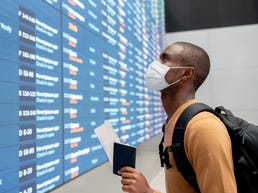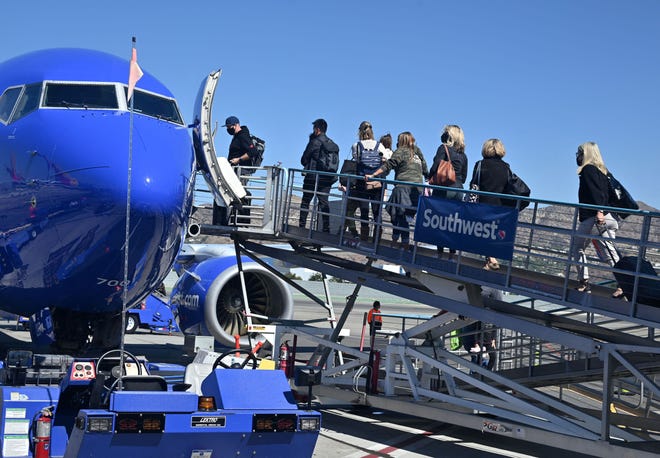
- The Centers for Disease Control and Prevention temporarily extended the agency's Framework for Conditional Sailing Order.
- The Framework for Conditional Sailing Order was published initially Oct. 30, 2020.
- The CSO includes guidance from the CDC to mitigate the spread of COVID-19 on cruise ships.
Cruise lines will be required to follow the Centers for Disease Control and Prevention protocol for COVID-19 on ships through Jan. 15.
Capt. Aimee Treffiletti, who leads the CDC's maritime unit, told USA TODAY Monday that the agency came to the decision to temporarily extend the agency's Framework for Conditional Sailing Order "in the best interest of public health."
"The pandemic isn't over. We've seen what the delta variant can do," Treffiletti said. "Despite, you know, really what have been the best efforts of the cruise industry to provide a safer and healthier environment for crew, passengers and communities, COVID-19 has still been a challenge, particularly with the delta variant."
► Meet Capt. Kate:In the cruise industry, she's a trailblazer. On TikTok, she's @captainkatemccue.
► Princess Cruises ships:Had early COVID-19 outbreaks. The cruise line is now 'ready and well-equipped,' top exec says
The CDC extended the order which was released nearly one year ago when the agency's No Sail Order was about to expire. As of Monday, the order applies to foreign-flagged commercial passenger vessels with the capacity to carry 250 people operating or planning to operate for overnight stays for passengers or crew in U.S. waters.
"Since the issuance of the CSO on Oct. 30, 2020, cruise lines, with CDC assistance, have developed and implemented strong health and safety protocols to manage COVID-19 and resumed passenger operations," the CDC said Monday in a release.
Cruise Lines International Association, the leading trade organization in the industry, said that the changes to the CSO show that the Biden administration and the CDC recognize the industry's successful resumption of operations.
"Cruising has successfully resumed in the United States, with leading public health measures that have enabled our ocean-going cruise line members to effectively mitigate the risk of COVID-19 amongst cruise passengers, crewmembers and destinations," CLIA said in a statement shared by Bari Golin-Blaugrund, vice president of strategic communications and public affairs.
What will change with the temporary extension of the Conditional Sailing Order?
Treffiletti said Monday that there will be some minor changes to the Conditional Sailing Order with the extension.
"Over time, with our online resources, so our technical instructions and our technical instruction web pages, and our COVID-19 operations manuals, we've made adjustments based on the science to our recommendations and requirements," Treffiletti said.
The temporary extension of the order Monday incorporated recommendations and requirements listed in the CDC’s Technical Instructions and COVID-19 Operations Manual for cruise ships that have come over time related to protocol, such as masking and testing. Changes also included the order's shift to pertaining only foreign-flagged ships, Dave Daigle, CDC spokesperson, told USA TODAY.
"Foreign-flagged ships typically operate on international itineraries far from U.S. shores, outbreaks are more likely to require emergency evacuations while at sea which can burden U.S. Coast Guard and other emergency medical response resources," Daigle said. "Additionally, stopping in foreign ports increases the risk of introducing COVID-19 variants on board."
In January, the health agency plans to transition to a voluntary program in which participation will be at the discretion of cruise lines.
The health agency will continue to work with the cruise industry going forward, Treffiletti said.
What was the Conditional Sailing Order's initial purpose?
The order, announced last October, was created by the CDC to lay out a phased approach for the safe resumption of cruising in U.S. waters.
Cruise lines were offered two paths for restarting operations: They were allowed to either implement a vaccination requirement (at least 95% of crew and passengers vaccinated) and sail immediately with paying passengers or to conduct simulation sailings with volunteer passengers to test onboard COVID-19 protocol and earn CDC approval to sail with paying passengers.
In late June, more than a year after the industry shut down, Celebrity Cruises' Celebrity Edge became the first cruise ship to sail in U.S. waters with paying passengers since March 2020.
Has COVID-19 protocol required on cruises by CDC order worked?
The protocol in place on ships to mitigate COVID-19 "absolutely has" worked to make cruise ships safer as the world faces a global pandemic, according to Treffiletti.
While there still remains some risk of transmission of COVID-19 on board cruise ships, robust protocol including testing and masking, among other elements, have reduced the risk of the pandemic's onboard spread.
"We've never expected that there would be zero risk of transmission," Treffiletti said. "But one thing that's really important is that we haven't seen medical resources overwhelmed on ships – we haven't seen high rates of hospitalizations or deaths that we saw early on in the pandemic related to cruise ships. So, I think we can consider that a success."
As of Monday, 47 cruise ships were sailing with paying passengers in U.S. waters following CDC guidance, CDC spokesperson Caitlin Shockey told USA TODAY.
The CDC issued a "Level 3: High Level of COVID-19" notice warning on August 20 for cruise travel that remained in place Monday.
► 'World cruise of world cruises':Royal Caribbean announces sailing scheduled to visit 150 destinations
Source link










